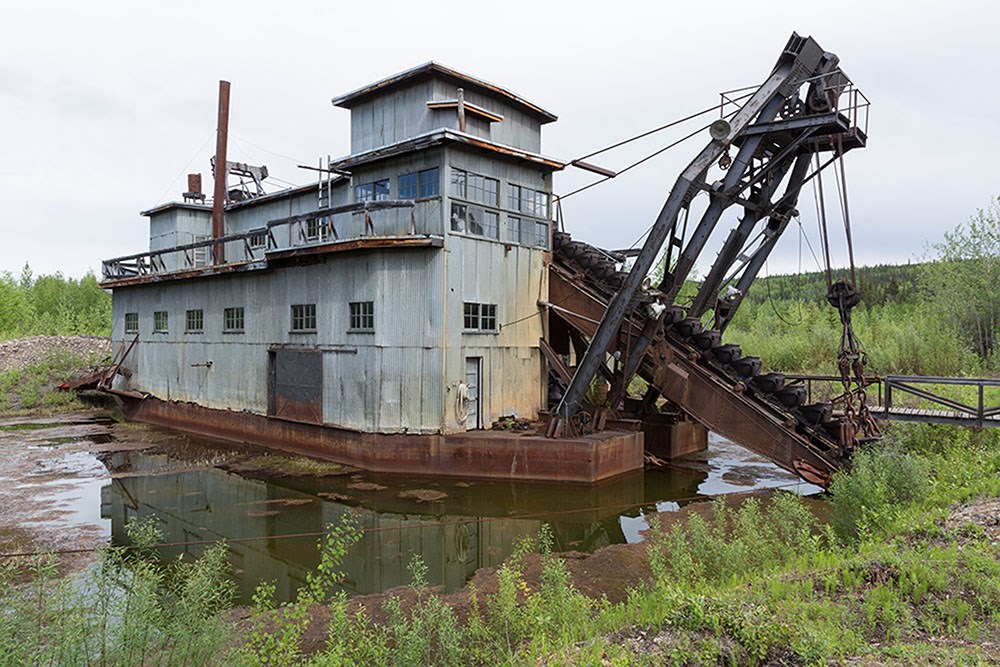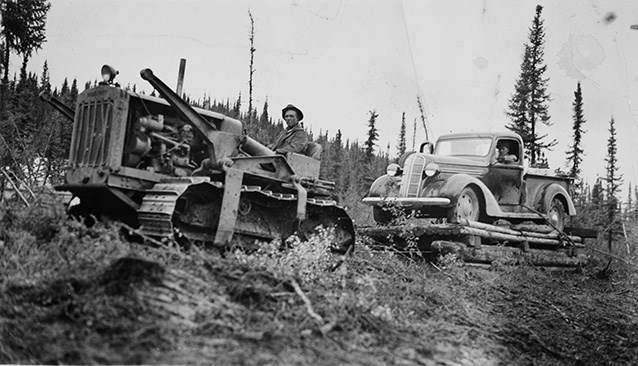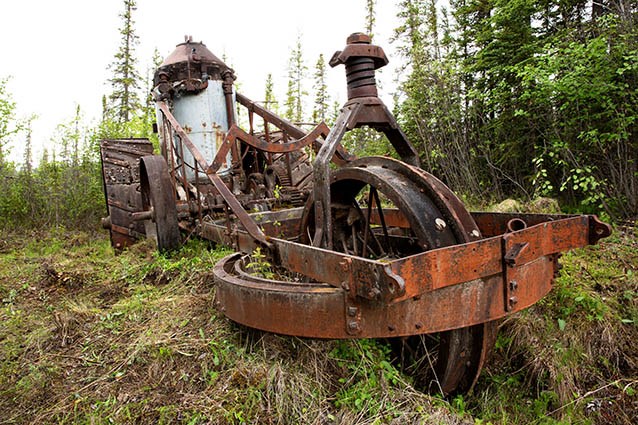Part of a series of articles titled Alaska Park Science - Volume 16 Issue: Science in Alaska's Arctic Parks.
Article
Rust in the Wilderness: The Story of Mining Machines in Yukon-Charley Rivers National Preserve
By Chris Allan, National Park Service
Gravel mining continues to be a simple process; not the simplicity of a fool, but the simplicity of empirical deduction. It is the growth of experience in overcoming natural obstacles.
T. A. Rickard, 1908
Gravel mining continues to be a simple process; not the simplicity of a fool, but the simplicity of empirical deduction. It is the growth of experience in overcoming natural obstacles.
T. A. Rickard, 1908

NPS photo courtesy of Yasunori Matsui
The drama of the Klondike gold rush in the late 1890s and subsequent gold discoveries across Alaska made the region synonymous with glittering gold and overnight wealth, but pulling profit from the earth was never easy. The region has always presented its human inhabitants with natural obstacles like frigid temperatures, rough terrain, and lengthy supply lines. In addition, the mechanical products of the Industrial Revolution, which transformed much of the world, were slow to arrive in the Far North. For much of the gold rush era, sled dogs and foot travel were more common than steamboats or other representatives of industrialism. It was not until gold was discovered in large quantities that the pace of mechanization increased. My new book entitled Gold, Steel & Ice: A History of Mining Machines in Yukon-Charley Rivers National Preserve (2015) helps to document the ways in which machines made “gravel mining” possible during the heyday of gold production in the Far North.
Mining in the Klondike began in spectacular fashion with stampeders who entered northwestern Canada to begin pick-and-shovel-style placer gold mining. At first, they used rudimentary tools and simple technology—whatever they could haul on their backs or build from materials on site. Using hand tools, flowing water, sluice boxes, and plenty of hard work, they set about separating small amounts of gold from large amounts of sand and gravel. Although some gold could be captured at the surface with a prospecting pan, most was deep underground in a thin layer just above bedrock. Unlike stampeders in California a half century before, miners at northern latitudes faced an additional challenge: the frozen ground called permafrost that made digging to bedrock and locating the gold difficult, dangerous, and slow. Within a year or two, those miners with money began importing labor-saving machines.

Documenting the history of mining machines is challenging for a number of reasons. Miners, as a rule, did not write about their daily activities or leave detailed descriptions of the tools they used. Why pay attention to a pick, a shovel, or an excavation bucket? Likewise, large machinery received little notice. Oral history recordings rarely describe mining activities, and business records yield information about the economics of mining, but rarely explain how work was carried out. Historical newspapers tend to focus on how much gold was collected while ignoring the machines used to do the work. To fill in the gaps, historians must turn to less conventional sources like company catalogs and advertisements, patent drawings, trade journals, and the clues contained in historical photographs. The machines themselves also offer clues about how they were used and when.


NPS photo courtesy of Yasunori Matsui
Today visitors to Yukon-Charley Rivers National Preserve can explore mining camps that look as if the miners simply dropped their tools, turned off their machines, and walked away. These sites exist as open-air museums in a landscape sculpted by decades of mining. Although at first the machines appear to be mute hunks of rusted steel, each one has a story to tell. They tell about the challenges of placer mining in an unforgiving environment, about the dramatic shift from steam power to the internal combustion engine, about the process of trial and error that made poor ground profitable, and about the inventors and engineers who dreamed of conquering the Far North by machine. Finally, the mining machines of the park unit tell stories about the lives of the intrepid individuals who turned a gold rush into a gold industry and in the process changed the course of Alaska’s history.
Reference
Allan, C. 2015.
Gold, Steel & Ice: A History of Mining Machines in Yukon-Charley Rivers National Preserve. National Park Service.
Allan, C. 2015.
Gold, Steel & Ice: A History of Mining Machines in Yukon-Charley Rivers National Preserve. National Park Service.
Last updated: August 20, 2020
